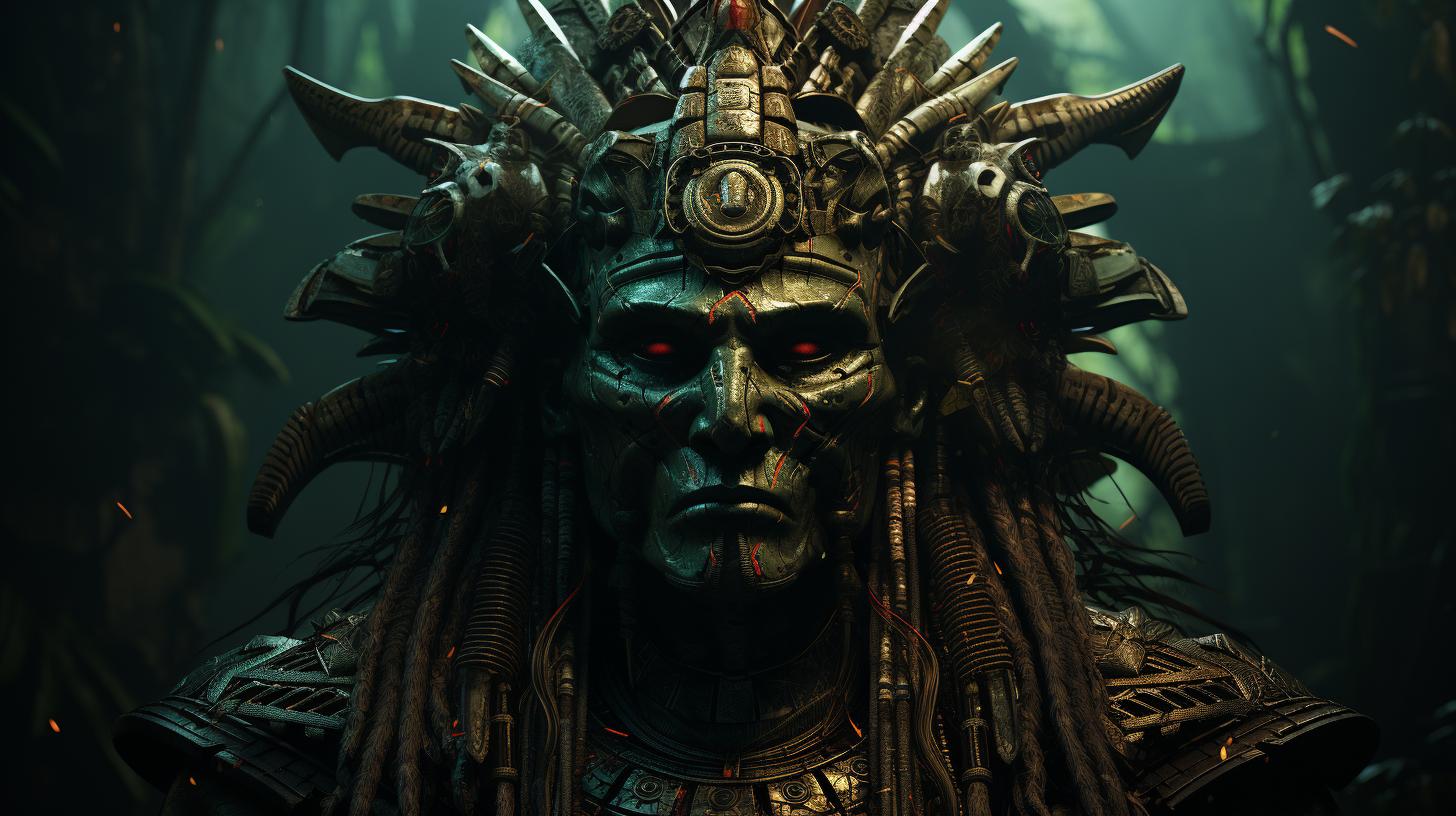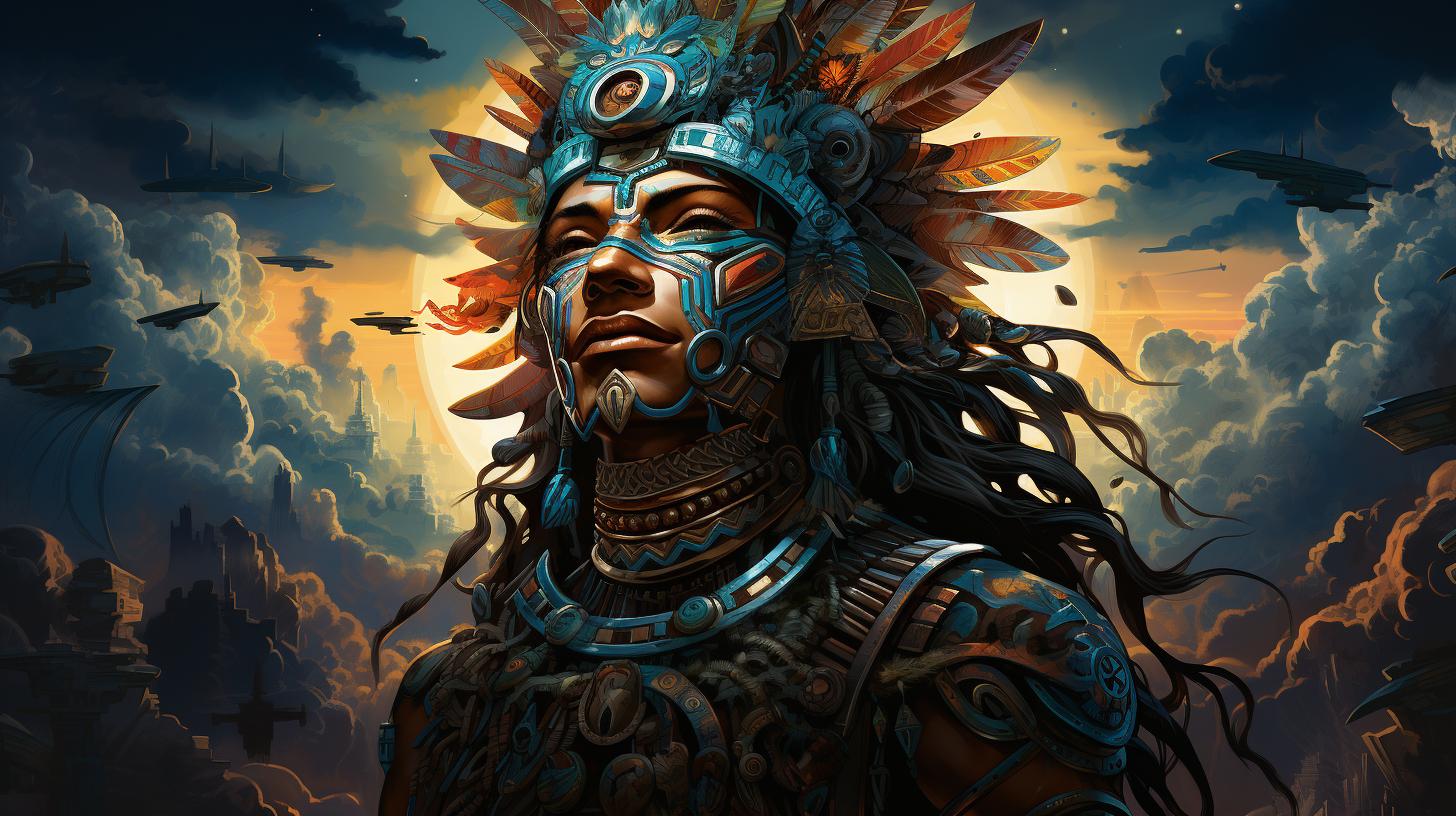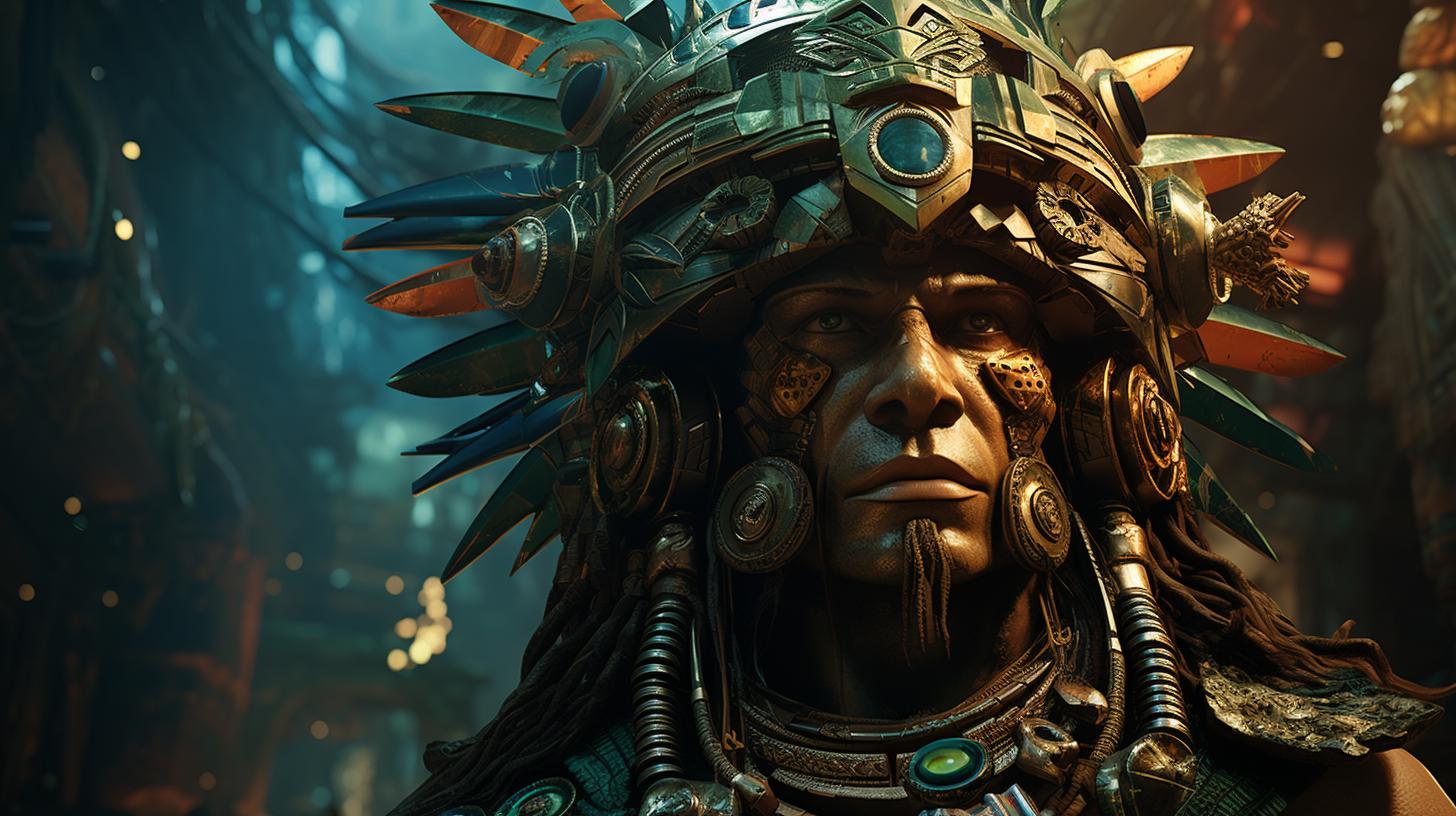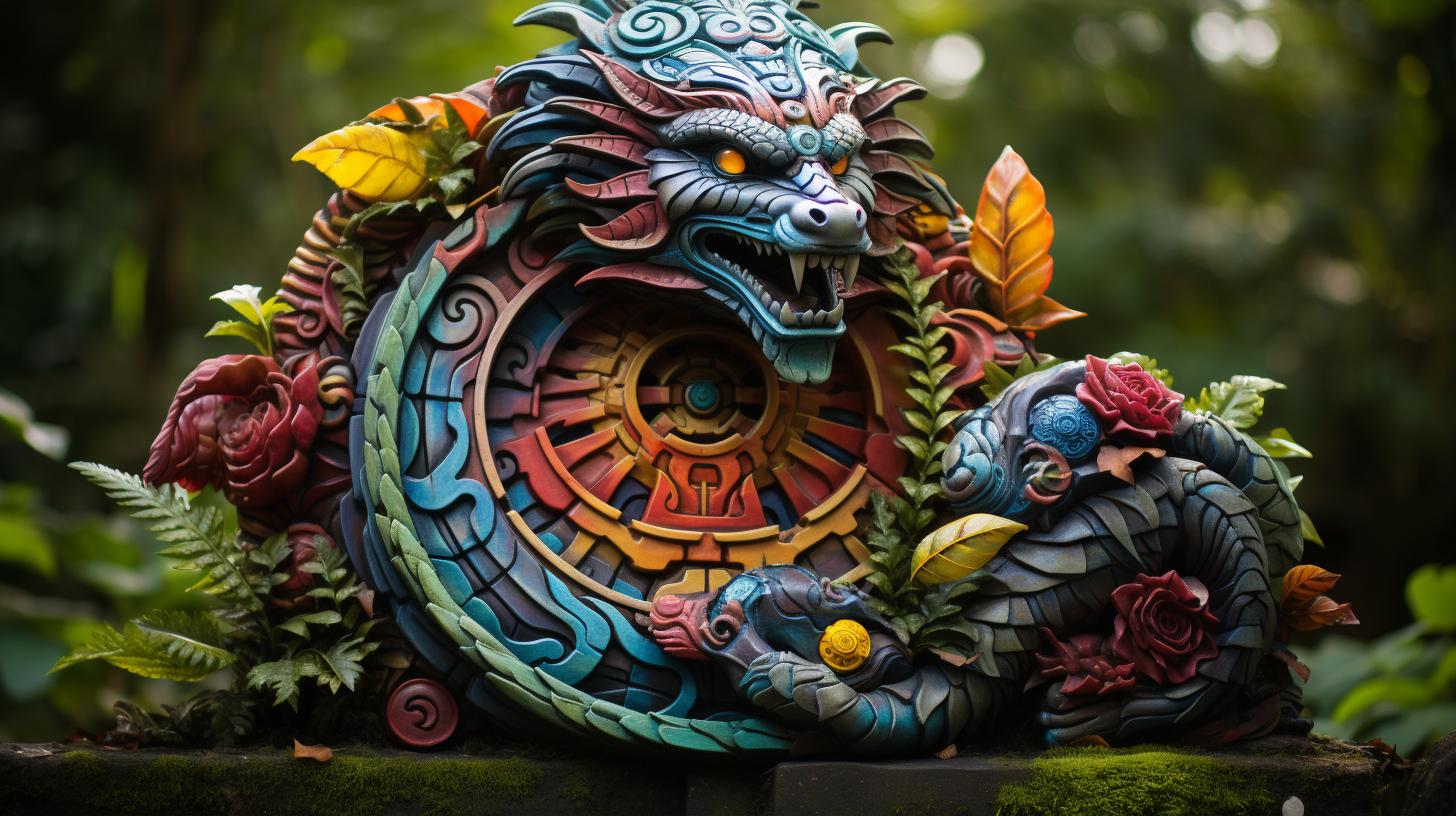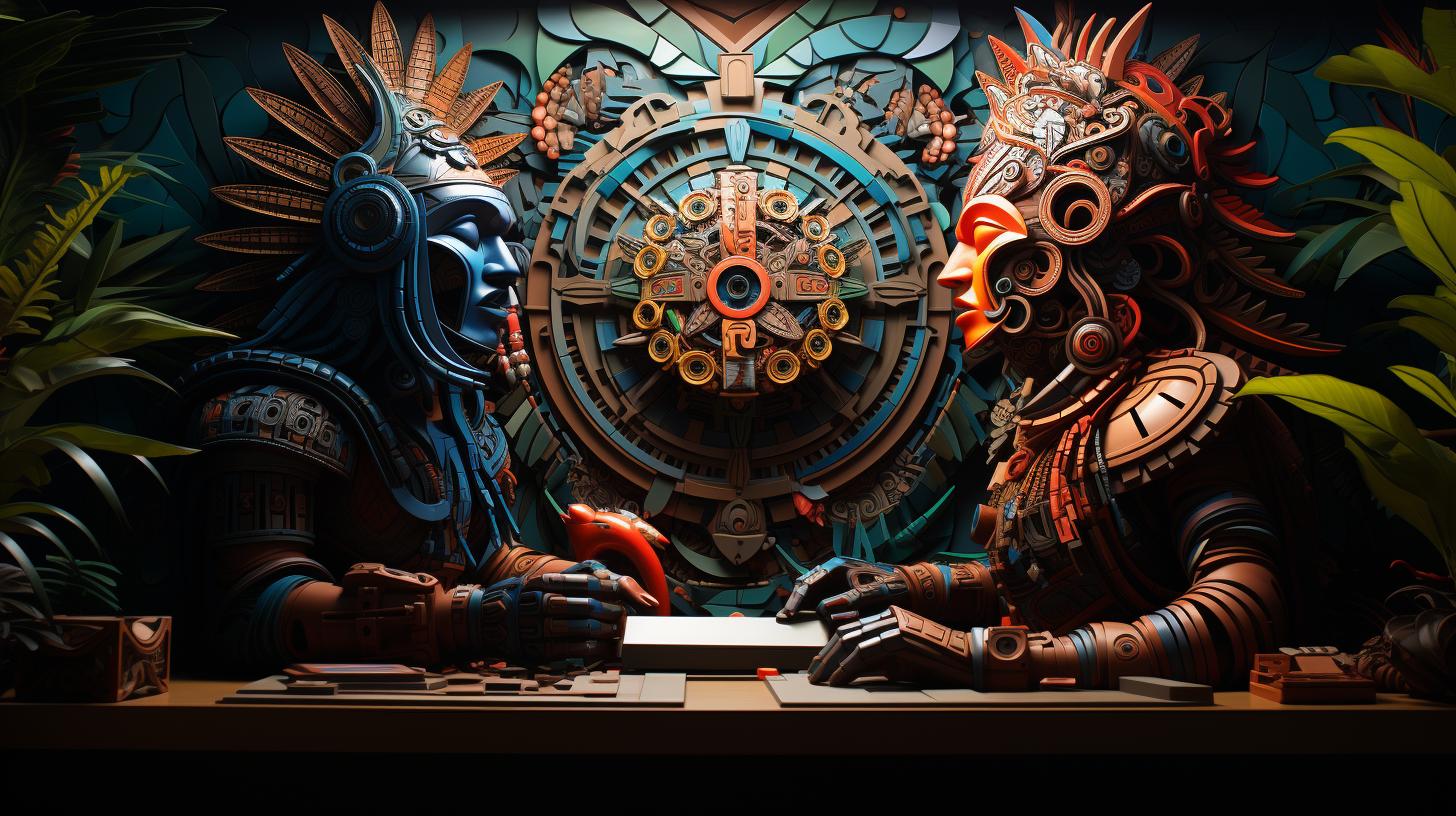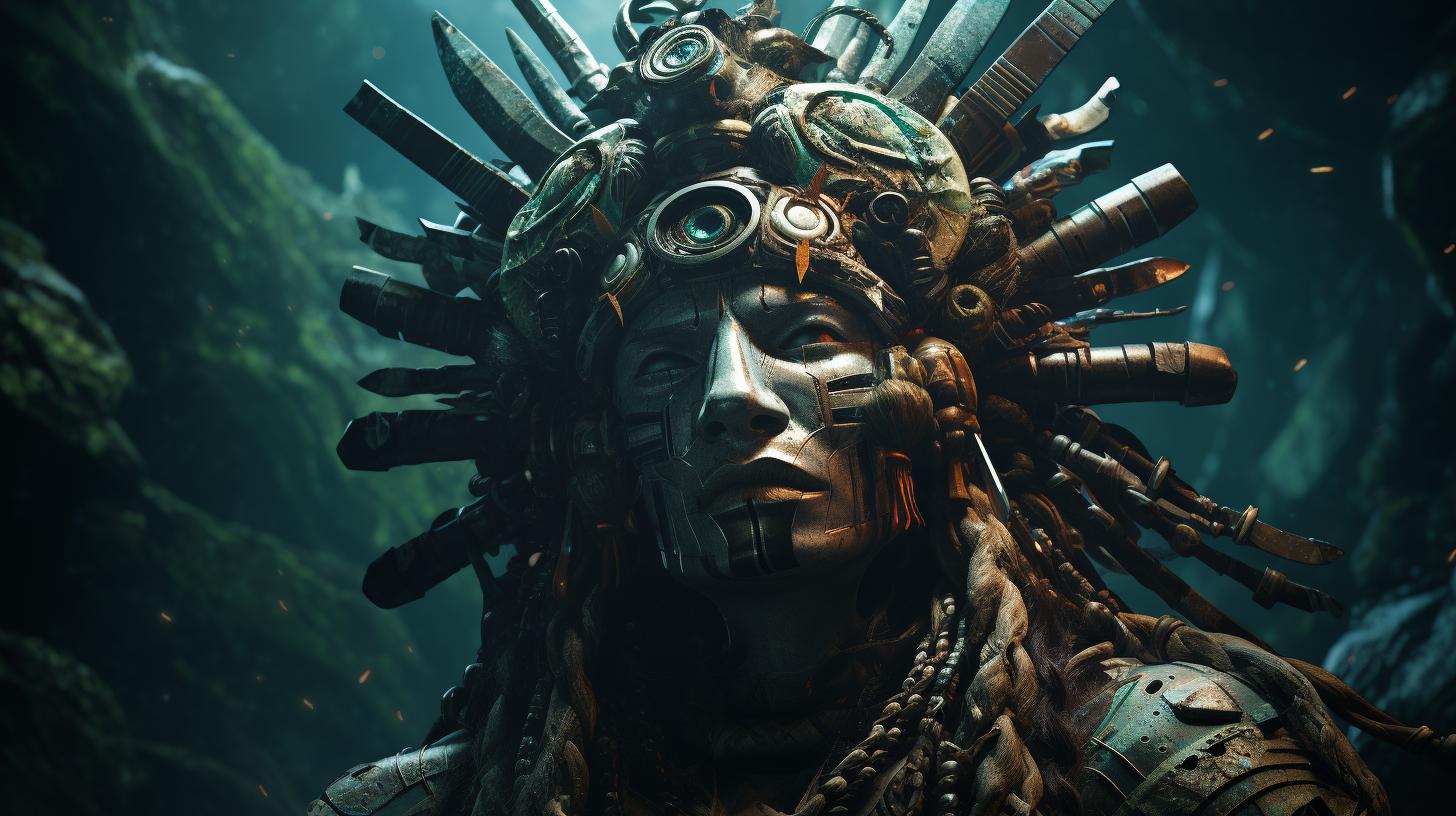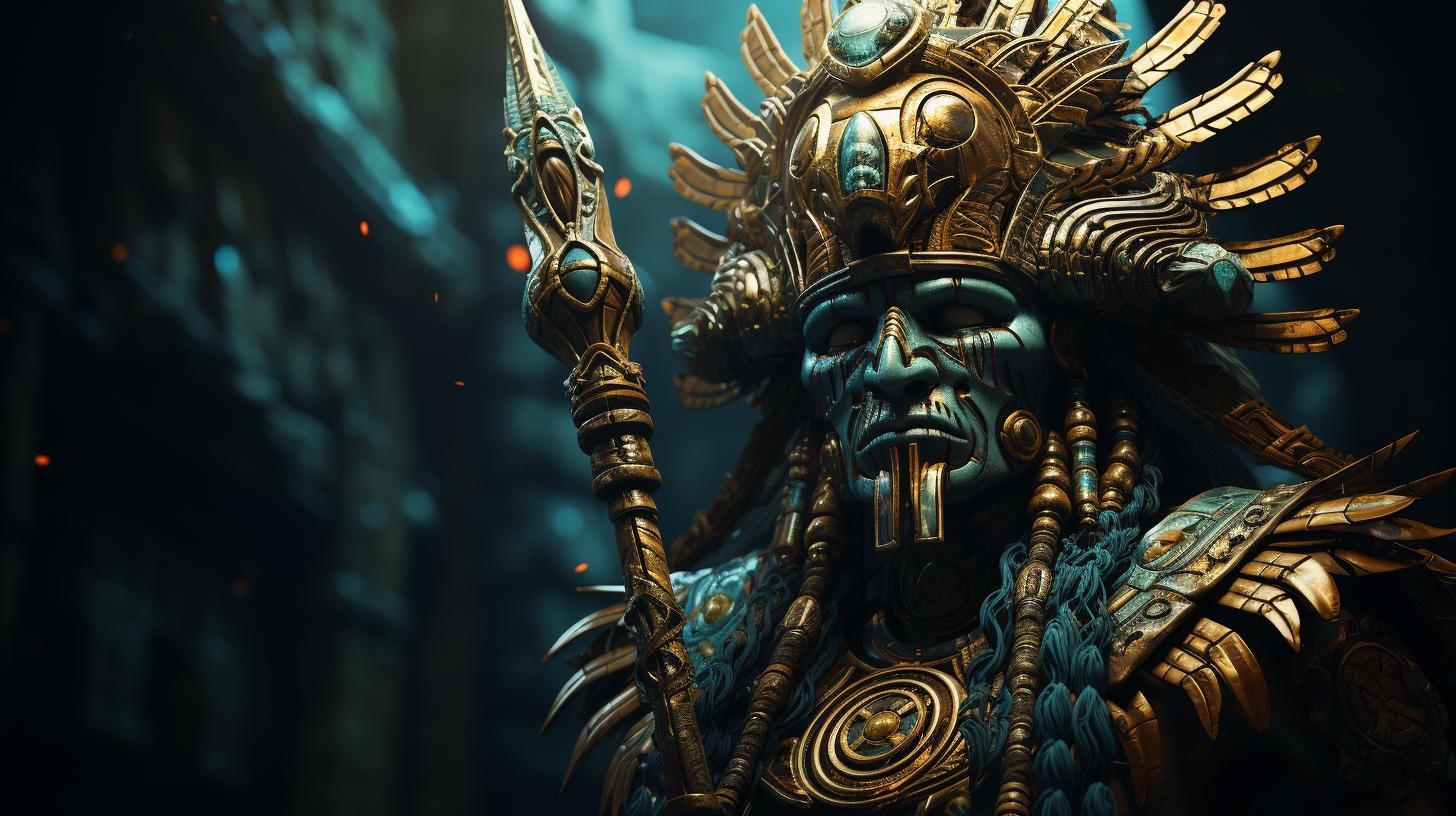Mayan God Ah Pukuh: Exploring the Deity of Death and Birth

Ah Pukuh, the Mayan god, embodies the realms of death, darkness, and birth. Depicted as a skeletal figure with protruding ribs and skull, or as a bloated figure representing decomposition, he is often associated with owls and bells.
Mayan worship rituals involved extreme mourning to ward off Ah Pukuh’s presence and protect loved ones. Historical references, such as the Book of Chilam Balam de Chumayel and the Popol Vuh, highlight his significance.
Today, Ah Pukuh continues to inspire art, literature, and popular culture, showcasing his enduring influence.
The Mythology and Symbolism of Ah Pukuh
Ah Pukuh, the Mayan god, embodies contrasting aspects of life and death. Within this deity’s mythology, he represents not only the dark and inevitable nature of death but also the potential for rebirth and renewal.
This duality highlights Ah Pukuh’s role in the cycle of existence, where endings give way to new beginnings.
Contrasting aspects of life and death within Ah Pukuh
- In Mayan mythology, Ah Pukuh personifies death and darkness, symbolizing the inevitable end that accompanies life.
- However, Ah Pukuh also holds significance as a bringer of beginnings, representing the continuous cycle of life, death, and rebirth.
- His dual nature highlights the interconnectedness of these contrasting aspects within Mayan cosmology.
Symbolism of rebirth and renewal with Ah Pukuh
While Ah Pukuh is associated with death, his symbolism also includes themes of rebirth and renewal.
By embodying the cycle of life, his presence illustrates the revitalizing power that can emerge from endings.
Ah Pukuh’s duality: Birth and beginnings
Ah Pukuh’s portrayal as a deity of both death and birth further emphasizes his duality. As death arrives, it paves the way for new beginnings, perpetuating the cycle of life. Ah Pukuh’s association with birth showcases the transformative potential found within the realm of mortality.
Depictions of Ah Pukuh in Art and Iconography
Ah Pukuh’s representation in art and iconography reflects his association with death, darkness, and the cycle of life. Let’s explore the different depictions of Ah Pukuh in various forms:
Skeletal Figure with Protruding Ribs and a Skull
One common representation of Ah Pukuh is as a skeletal figure with prominent ribs and a skull.
This portrayal emphasizes the connection between Ah Pukuh and the realm of the dead, highlighting his role as a deity of death and ultimate transition.
Representation as a Bloated Figure Suggesting Decomposition
In some artistic renditions, Ah Pukuh is depicted as a bloated figure, symbolizing advanced decomposition. This form further emphasizes the cyclical nature of life and death, as Ah Pukuh bridges the boundaries between the physical and spiritual realms.
Depiction as a Skeletal Figure with an Owl’s Head
Due to his association with owls, Ah Pukuh is often depicted as a skeletal figure with an owl’s head. This combination reflects his connection to darkness and wisdom, as owls are often associated with nocturnal environments and are seen as creatures of knowledge and intuition.
Relationship with Bells and Other Symbolic Elements
In various artistic representations, Ah Pukuh is depicted alongside bells, emphasizing his role as a deity associated with death and mourning. The sound of the bells is believed to ward off evil spirits and guide the souls of the departed.
Additionally, other symbolic elements such as the necklace made of human eyes and black spots representing decomposition can be seen in depictions of Ah Pukuh, further illustrating his domains and characteristics.
The depictions of Ah Pukuh in art and iconography vividly capture his multifaceted nature as a Mayan god associated with death, darkness, and new beginnings. Through distinct visual representations, artists sought to convey the essence of Ah Pukuh’s role in the Mayan belief system, invoking a sense of awe and reflection on the cycle of life.
Rituals and Worship of Ah Pukuh
Ah Pukuh, the Mayan god associated with death and darkness, held significant importance in Mayan rituals and worship practices. Let’s explore the various aspects related to the rituals and worship dedicated to Ah Pukuh:
Maya beliefs and practices surrounding death
The Maya had profound beliefs and practices surrounding death, and Ah Pukuh played a central role in their worldview.
They believed that Ah Pukuh, as the lord of death, had the power to guide the souls of the deceased to the underworld. They also believed in an afterlife realm known as Xibalba, governed by Ah Pukuh and other deities.
Fear of Ah Pukuh and protective measures
Ah Pukuh instilled a deep fear among the Maya due to his association with death and darkness. The Maya believed that Ah Pukuh could wander the Earth, seeking out injured or sick individuals and inflicting misfortune upon them.
To protect themselves from his malevolent presence, the Maya implemented various protective measures, such as amulets, talismans, and charms.
Mourning rituals and ceremonies
When a loved one passed away, the Maya would engage in elaborate mourning rituals and ceremonies. These rituals were characterized by extreme displays of grief, including loud lamentations and wailing. The purpose of these mournful practices was to frighten away Ah Pukuh and prevent him from claiming more souls for the underworld.
Offerings and prayers dedicated to Ah Pukuh
The Maya offered offerings and prayers to Ah Pukuh as a means of appeasing him and ensuring the safe journey of their deceased loved ones. These offerings often included food, drink, and other items deemed valuable or significant.
Additionally, priests and individuals would recite prayers and invocations, seeking Ah Pukuh’s favor and protection.
In conclusion, the rituals and worship dedicated to Ah Pukuh in Mayan culture encompassed profound beliefs about death and the afterlife.
Through various rituals, protective measures, mourning practices, and offerings, the Maya sought to honor Ah Pukuh and mitigate his potentially negative influence in their lives.
Ah Pukuh in Mayan Literature and Historical References
Ah Pukuh, the enigmatic Mayan deity, has left significant traces in ancient texts and inscriptions.
References to this god provide invaluable insights into the Mayan understanding of death, birth, and the underworld.
References to Ah Pukuh in ancient texts and inscriptions
Mayan history and mythology are rich in references to Ah Pukuh. Inscriptions found on temples and monuments make mention of this god, shedding light on his significance in ancient society. The Mayans believed that Ah Pukuh governed the realms of death and darkness, and these inscriptions reinforce his prominent role.
Mention of Ah Pukuh in the Book of Chilam Balam de Chumayel
The esteemed Mayan manuscript, the Book of Chilam Balam de Chumayel, provides further insight into the mythology surrounding Ah Pukuh. It recounts tales of his interactions with other deities and emphasizes his association with death, darkness, and birth.
Ah Pukuh’s presence in this sacred text solidifies his importance within Mayan religious beliefs.
Role as an attendant of Xibalba in the Popol Vuh
Ah Pukuh’s role as an attendant in the Popol Vuh, the Mayan creation myth, highlights his connection to the underworld. In this epic narrative, Ah Pukuh is depicted as a guardian of Xibalba, the realm of the dead.
His presence underscores the Mayan understanding of death as an integral part of the cosmic order.
These literary and historical references provide valuable glimpses into the Mayan perception of Ah Pukuh.
Their inclusion in ancient texts and inscriptions solidify the deity’s enduring significance within Mayan culture and mythology.
Ah Pukuh in Comparative Mythology and Modern Culture
Recap of Ah Pukuh’s Significance and Multifaceted Nature
Ah Pukuh, the Mayan god associated with death and birth, holds a significant place in Mayan mythology. His multifaceted nature embodies contrasting aspects of life and death, representing both darkness and rebirth.
Ah Pukuh’s duality as a god of beginnings makes him a fascinating and complex figure within Mayan cosmology.
Influence of Ah Pukuh in Contemporary Art, Literature, and Media
The rich symbolism and intriguing imagery surrounding Ah Pukuh have captured the imagination of artists, writers, and filmmakers in modern culture. His skeletal form with protruding ribs and an owl’s head has become an iconic representation in various artistic mediums.
Ah Pukuh’s influence can be seen in contemporary literature, where authors draw inspiration from his role as a guardian of the underworld or incorporate his symbolism into themes of life, death, and transformation.
From novels to poems, Ah Pukuh’s presence adds depth and mystique to storytelling.
In visual arts, Ah Pukuh’s skeletal figure and his association with bells have inspired striking and evocative representations.
Artists explore the themes of mortality, rebirth, and the cycle of life through their interpretations of Ah Pukuh, capturing the essence of his complex character.
This captivating Mayan deity has also made an impact on the world of cinema.
In movies, Ah Pukuh’s image and lore often serve as a source of inspiration for storytelling that delves into the realms of the supernatural, ancient civilizations, and the mysteries of life and death.
With his intriguing symbolism and profound connection to life’s existential questions, Ah Pukuh continues to fascinate and inspire artists, writers, and filmmakers, leaving an indelible mark in modern culture.
.

